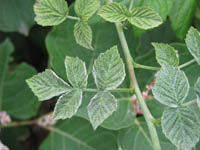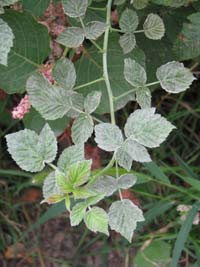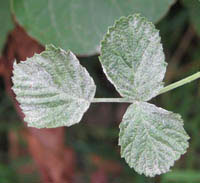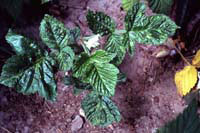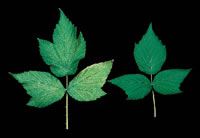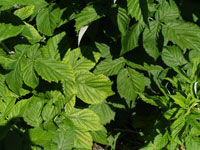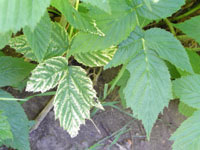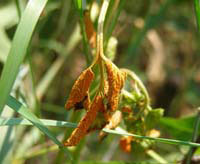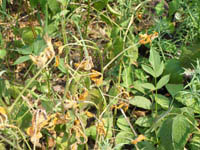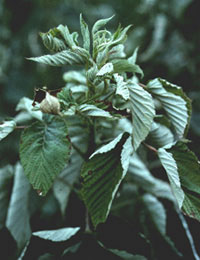Extension > Garden > Diagnose a problem > What's wrong with my plant? > Fruit > Raspberry > Discolored leaves
Raspberry > Leaves > Discolored leaves
1 of 7
Powdery Mildew
Podosphaera aphanis
- Light green blotches develop on the upper surface of the leaves
- White patches may develop on leaf surfaces and fruit
- Young leaves curl inward
- More information on Powdery Mildew
2 of 7
Tomato Ringspot Virus and Mosaic Virus
- Light to dark green mottling of leaves
- Leaves may be deformed, blistered, or misshapen
- Plants show a progressive stunting of growth and poor yield
- Fruits on infected bushes are small and crumbly
- General decline in the cane vigor and fruit production
- More information on Tomato Ringspot Virus and Mosaic Virus
3 of 7
Spider Mites
Tetranychus urticae
- Feeding on the underside of leaves causes a “russet” appearance to the leaves; leaves may become distorted
- In heavy infestations, webbing can be found on underside of leaves
- Adult spider mites are very small (approximately 1/50 inch in length), and are yellow to dark crimson, with dark spots
- Mites usually appear in late June-August; more prevalent in hot, dry weather
- More information on Spider Mites
4 of 7
Nutrient Deficiency
- Leaves turn yellow to white, often veins remain green
- Canes show a general decline in vigor over time
- More information on Nutrient deficiency
5 of 7
Orange Rust
Arthuriomyces peckianus
- Yellow or orange powdery spores on lower leaf surface
- Orange rust only affects black raspberry
- Yellow rust only affects red raspberry
- More information on Orange Rust
6 of 7
Herbicide Injury
- Leaves appear yellow or bleached
- Distorted and twisted leaves, margins of the leaf are often cupped upward
- More information on Herbicide injury
7 of 7
Potato Leafhopper
Empoasca fabae
- Leaves appear wrinkled from leafhopper feeding; may have a yellow tinge to the leaves
- Feeding may stunt the plant, resulting in a reduced yield
- Potato leafhopper adults are lime green, slender, small (⅛ inch long), and wedge-shaped
- Leafhoppers are present from June-August
- More on potato leafhopper



